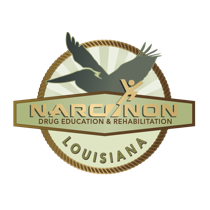Why People Don’t Respond To Treatment

Shockingly, in 2024, 8 million people required substance abuse treatment. Sadly, less than half of these individuals found a center and made it to treatment. An even smaller fraction of those able to make it into treatment had a good response to it and were able to get sober and stay sober.
What is treatment? Treatment is defined as medical care given to a patient for an illness or an injury. This, however, does not take into account whether the person has access to and/or can afford the treatment since there are barriers people face. The first barrier people run into is the financial aspect of treatment. Drug addiction treatment can be very costly unless you have Medicaid. However, if you want to know just how difficult Medicaid is regarding drug treatment, please refer to my last blog, “Medicaid the Revolving Door Policy.” Treatment can be very costly, even with a private insurance policy.
Some families have the cushion of private insurance for families seeking help and have the benefit of coverage. Most often, though, people who do not have private insurance cannot afford to get their loved ones into treatment, in which case they have to rely on programs that are free. Those programs often have a revolving door to treatment, and for some addicts, this can be a never-ending, continually perpetuating battle.
The second barrier is willingness. Most of the time, it is the family of an addict who is looking for treatment and not the addict themselves.
An addict (speaking from my own experience) tends to have a skewed view of survival. They are constantly thinking about and looking for their next high because, without it, they assume they will die. The fact is most people who are addicted don’t look for treatment or want any form of help because they believe the withdrawal from their substance of choice is infinitely worse than the pain of detox. While they aren’t far from wrong, the pain of addiction is also unbearable, but the drugs are masking the effects. So, while the body is slowly and gradually dying, the person using it can’t feel it. This, quite frankly, is one of the most terrifying aspects of the whole scenario.
The final significant barrier people face is once they arrive in a treatment center, they have to respond to it. Once in a facility, the biggest challenge is to be detoxed from the drugs and then work on yourself to figure out why you started abusing drugs in the first place. Most facilities don’t even cover that second part. They will get you detoxed and either force you out the door or ask you to attend meetings in a different place.
This is where Narconon is different. The Narconon program digs deep down to find the original problem(s) you solved by using drugs and work you through the sober solutions you will need to solve those problems differently.

This brings up the definition of a problem. What is a problem? A problem occurs when a person has the intention to do something but is impeded by an opposing force that pushes back (a counter-intention), resulting in the person feeling stuck and worried.
As an addict, you could eliminate that worry by not confronting it and using drugs or alcohol as a way to enable you to non-confront. To stop being an addict and unburden yourself from running into the same problem in life, you must go back into your past, face the original problem, confront it, and find a more optimal solution.
It is imperative to do this, or the addict will continue to operate at a lower survival level, never actually able to solve any problem. When we don’t want to face our trauma, and it can be exceedingly difficult for someone to do so, an addict can resort to burying the problem with drugs or alcohol. This cyclic pattern continues the abuse, especially in cases where the pain has been masked for so long.
These are the reasons people have a tough time responding to treatment and why maintaining sobriety can be so hard. If an addict can’t solve their root problems in life and they are not given the tools to solve future problems, they will always go back to the most accessible form of solving issues. Unfortunately, with substance abusers getting high or drinking, both addicts and those trying to help them know that there is never a solution.


